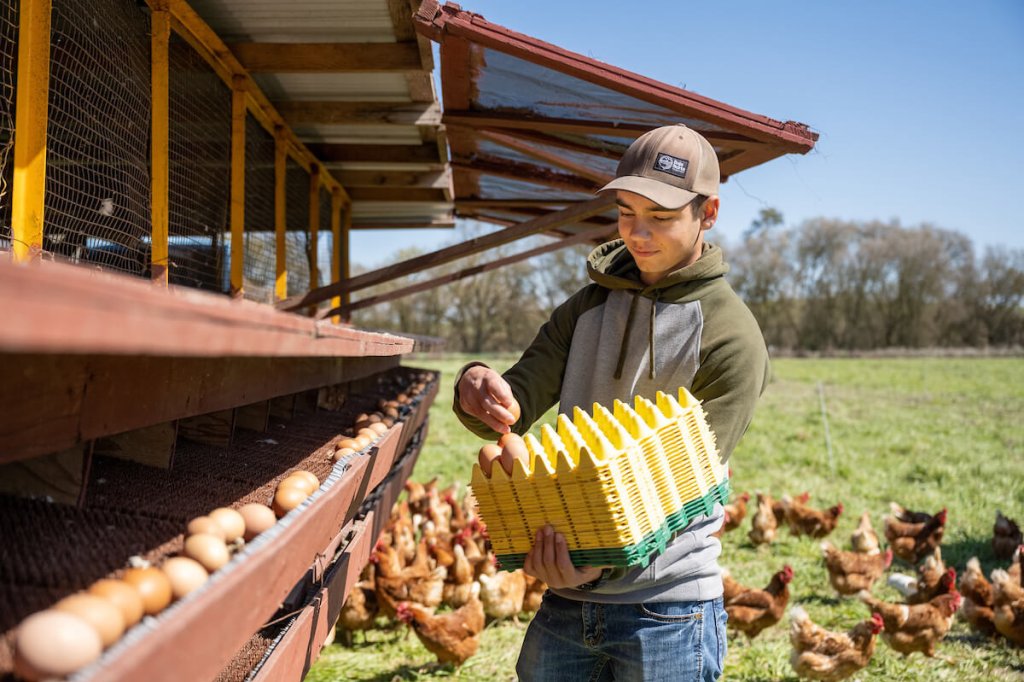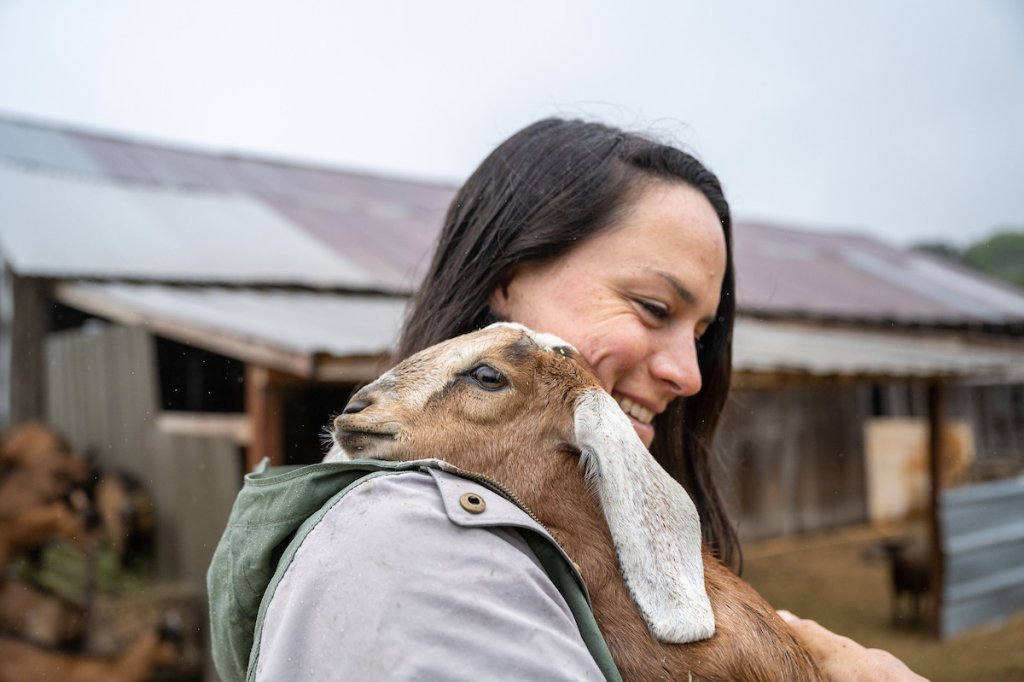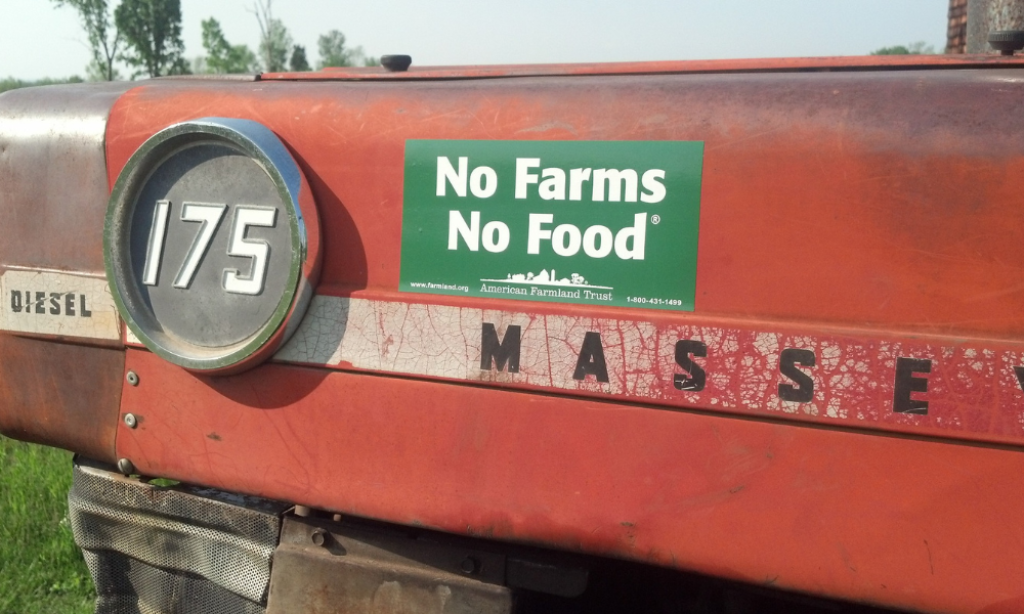Texas Farmland is the Most Threatened in the Nation
Urban expansion plus scattered large lot development in rural areas means paving over and fragmenting farmland, disrupting farming.
4/15/2021, WASHINGTON, DC – Today, American Farmland Trust told attendees at the Texas Land Conservation Conference – Texas farms are under severe threat, its best land succumbing to development. Sharing results from its May 2020 report “Farms Under Threat: The State of the States” report which identifies exactly where agricultural land has been paved over, fragmented, or otherwise converted to uses that jeopardize agriculture, AFT asked attendees to join in partnership to turn back the tide of land loss by working to strengthen state and federal policies, build public support for protecting farmland and ranchland, and usher in a brighter future for agriculture.
Between 2001 and 2016, AFT’s report reveals 11 million acres of America’s agricultural land were developed or converted to uses that threaten farming. Using cutting-edge geospatial technology, the report maps the extent, location, and quality of each state’s agricultural land and tracks how much of it has been converted in each state. In addition, the Agricultural Land Protection Scorecard analyzes six programs and policies that are key to securing a sufficient and suitable base of agricultural land in each state. Individual state policy summaries outline state performance and how each state can improve its performance.
With this research, AFT makes it clear that there is an urgent need to act to retain agricultural land for future generations to produce food, support jobs and the economy, provide essential environmental services, and help mitigate and buffer the impacts of climate change.
“Farms Under Threat: The State of the states is not just numbers and maps. It is about getting farming right before it’s too late,” said Mitch Hunter, AFT research director. “Because without an abundant supply of farmland and ranchland, and without a thriving community of dedicated farmers and ranchers, our future is dim. Jobs, schools, and agri-businesses will leave rural communities. We will not be able to clean up our water. We will not be able to fight climate change or protect biodiversity. And we will be in much worse shape the next time our food system is side-swiped, whether by a pandemic or a drought, a recession or a heat wave.”
In Texas, 1,373,000 acres of agricultural land were developed or compromised. What’s more, the Texas policy summary shows the state has not been aggressive enough in addressing development pressure.
“AFT’s research demonstrates the urgent need for action to protect land critical for Texas’ agricultural economy and its ability to grow food and other crops, said Billy Van Pelt II, AFT’s Director of External Relations and Senior Advisor. “We’ve all witnessed the impacts of empty grocery store shelves early on in the pandemic – we must be vigilant in protecting our farms and ranches and ensuring that our food system is more secure and resilient.”
The hot spots for development are around Austin, Dallas-Fort Worth, Houston, Odessa and San Antonio. However, the threat is more than just urban sprawl. Texas’ agricultural land is disproportionately threatened by a new, more insidious kind of development discovered by AFT through this research, termed low-density residential, or LDR, land use.
Roughly 50% of the land developed or compromised in Texas fell into this category. Urban sprawl is familiar, but LDR not always immediately visible and therefore less likely to provoke a policy response. In Texas, LDR is 30 times more likely to be converted to urban and highly developed land use than other agricultural land.
LDR land use compromises opportunities for farming and ranching, making it difficult for farmers to get into their fields or travel between fields. New residents not used to living next to agricultural operations often complain about farm equipment on roads or odors related to farming. Retailers such as grain and equipment dealers, on which farmers rely, are often pushed out. Farmers can be tempted to sell out for financial reasons, or because farming just becomes too hard in the circumstances.
The urgency to protect Texas farmland becomes even clearer when we look at the demographics of agriculture. In Texas, there are more than six times as many producers over 65 as there are under 35. We know that land is most at risk of being sold for development when farmers and ranchers retire without someone in line to take over the operation.
Texas is an agricultural state with $24.9 billion in annual revenues from farms and nearly 132 million acres of agricultural land. Roughly 25% of this agricultural land is considered “Nationally Significant,” meaning that it is among the nation’s best land for growing food and crops. Five-hundred and fifty-five thousand acres of Texas’s “Nationally Significant” farmland was impacted by development, pushing intensive food production to more marginal lands, where input costs are higher, yields are lower, and soils degrade more quickly. A situation where farmers are challenged to make an adequate income and risk going out of business.
Van Pelt added, “Texas is a state where agriculture is valued, and we look forward to working with the Texas Agricultural Land Trust and partners across the state to ensure that farms and ranches are conserved and that they continue to be an important contributor to the economy. The current trend of farmland conversion is putting Texas’ agricultural economy at risk. The rate of farmland loss is jeopardizing $7.2 billion in agricultural exports and a thriving local food economy that exceeds a quarter of a billion dollars.”
AFT shared that despite the threat there is hope. AFT’s analysis shows that every single state has taken steps to combat poorly planned development, improve economic opportunities in agriculture, and help transfer land to a new generation of farmers and ranchers. It also shows that there is a robust policy toolbox from which states can draw. Lawmakers at the state, local and county levels can and must pursue effective policies and link them together to be effective.
“In the big picture, this analysis shows that there are lots of tools in the toolbox for states to use. So, there is good news here, folks,” said Hunter. “We can protect our land and the people who work it. We can get farming right. We can be more prepared for the next drought, recession, or pandemic.”
To view the Farms Under Threat webinar about Texas, click here.
For a brief summary of national results and connections with climate change, food security and the economy, visit National Media Release.
##
American Farmland Trust is the only national organization that takes a holistic approach to agriculture, focusing on the land itself, the agricultural practices used on that land, and the farmers and ranchers who do the work. AFT launched the conservation agriculture movement and continues to raise public awareness through our No Farms, No Food message. Since our founding in 1980, AFT has helped permanently protect over 6.8 million acres of agricultural lands, advanced environmentally-sound farming practices on millions of additional acres and supported thousands of farm families.
##
Hosted by the Texas Land Trust Council and sponsored by AFT and many of the nation’s most prominent conservation organizations, the Texas Land Conservation Conference is the preeminent statewide meeting for anyone working in the field of land and water conservation, private landowners interested in conserving their land, government, business and NGO agency partners, and any person interested in learning more about these important issues in Texas.




